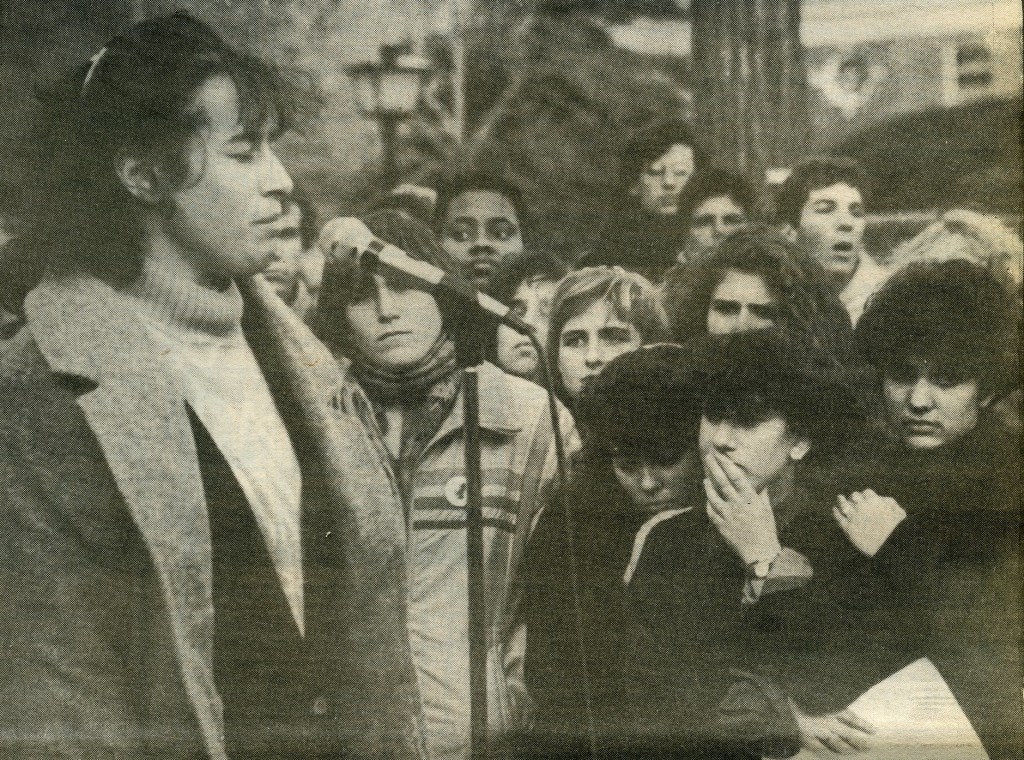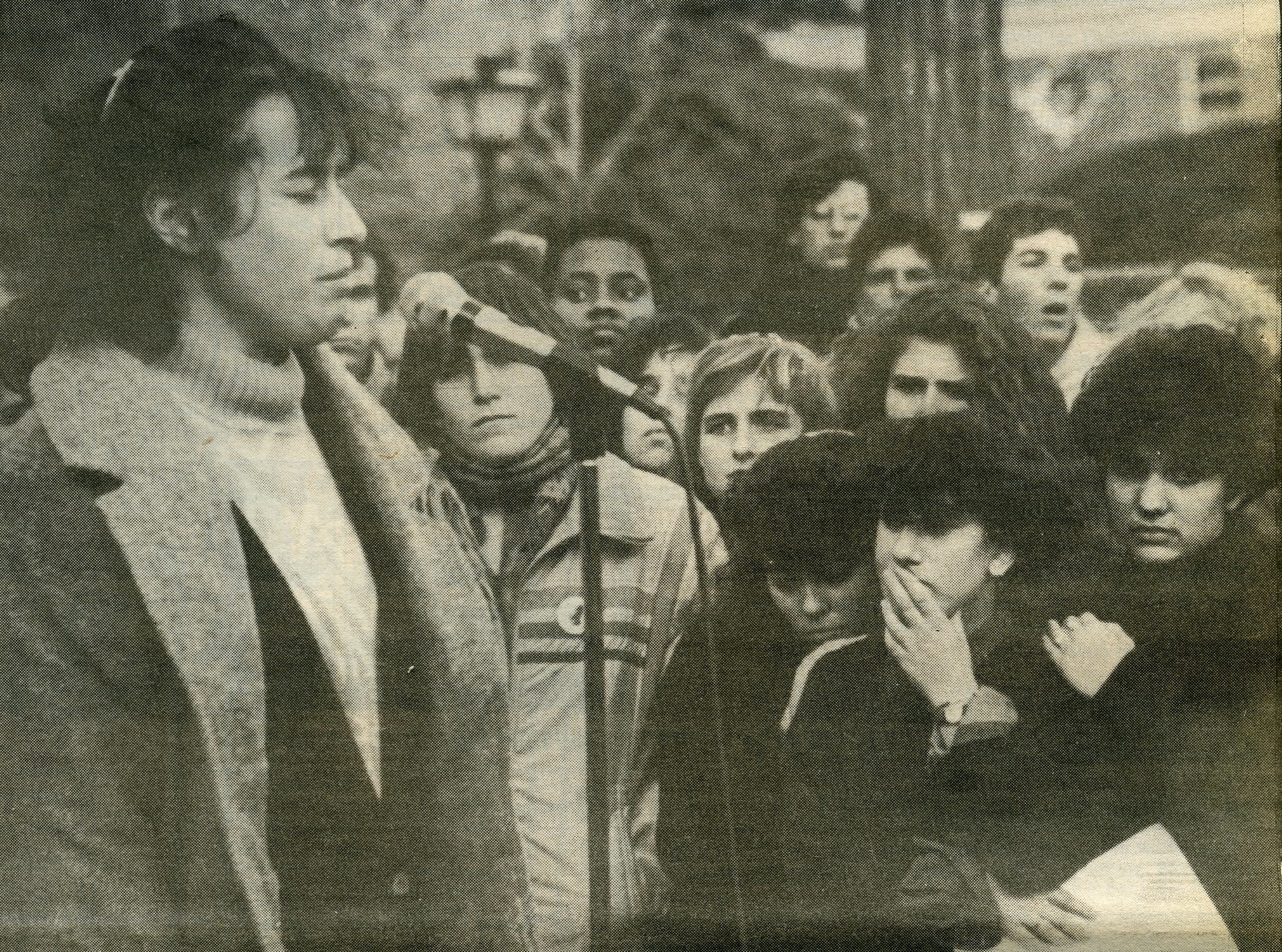By Sara Erkal & Paula Martinez Gutierrez
Twenty-four years ago, in 1990, Dean of Student Life John Robinson organized an open forum to discuss the issue of sexual assault. “Your outrage at the administration is justified,” he told the students sitting before him in List Auditorium, but the vacuous comment did not encapsulate the heavy burden that so many victims felt. And so they rose. The women, most of whom donned blood-red clothing, stood up silently as he spoke. Every 30 seconds another would rise, visually demonstrating the frequency of rape in America. It was one of many sweeping protests around sexual assault policy that rocked, and eventually transformed, Brown in the 1990s.
Earlier that year in April, a group of female Brown students approached the administration with complaints of sexual misconduct committed by male peers. Jenn David-Lang ’91, Jesselyn Brown Radack ’92, Christin Lahiff-Semprebon ’91 and Elizabeth Billowitz ’91 additionally suggested new disciplinary procedures to address allegations of sexual assault, as administrators had historically garnered a reputation for shrugging off students’ accusations. A member of the group anonymously told the Brown Daily Herald (BDH) that she was tired of deans excusing alleged offenders as “fine upstanding members of the Brown community.” The administration discussed the students’ policy recommendations, but refused to implement change.

By September, women across campus refused to accept any more delays and took to the John D. Rockefeller Junior Library bathrooms and began writing names of sexual assailants on the walls to expose their crimes. This method quickly gained popularity and similar lists could soon be found in various other university buildings. The lists, later dubbed the “Rape Wall” by the media, were constantly scrubbed off or painted over by university custodians only to reappear a few days later.
New York Times journalist William Celis III, who attended Robinson’s forum, called national attention to Brown by featuring an article on the evocative activism. Shortly after, David-Lang, Radack, Lahiff-Semprebon and Billowitz were invited to appear on the Phil Donahue Show. With the nation’s eyes on Brown, and a slew of negative feedback directed towards it, university officials were put under immense pressure to reform. In 1991, for the first time in Brown’s history, sexual misconduct was recognized as an offense punishable by the school’s disciplinary code.
While the movement resulted in the improvement of Brown’s response to sexual offenses, the bathroom accusations caused intense controversy within the Brown community. Several of the male students incriminated by the sexual misconduct claims maintained innocence and denounced the social problems arising from the anonymous nature of the Rape Wall. According to them, while some messages were legitimate, others were misused for personal vendettas. Many of the indicted men felt ostracized from the student community, even though their charges remained uncorroborated.
Some faculty members also criticized the movement’s anonymous nature. Then-President Sheila Blumstein was reported by the Brown Daily Herald, to imply that the graffiti was “lacking strength and integrity,” saying that if students were calling for increased accountability, they should then have taken responsibility for their own words. The Baltimore Sun also reported Robert Reichley, then executive vice president for university relations, as saying that, “The University will no more tolerate anti-male graffiti than it allows misogynistic, homophobic or racist graffiti.”
As a response to the criticism of the movement’s anonymity, David-Lang pointed out that most of the complaints on the walls had been taken to the Deans with no result. Moreover, considering that the only punishment at Brown for sexual aggressors consisted of “[writing] an apology letter to the victim,” students argued that fear of backlash stopped victims from taking action against their perpetrators. The anonymous messages created a public space where the aggressions could be safely exposed, and the persistent activism finally provoked much-needed action from the University. As Radack commented, “The bathroom walls were a last resort for these women because the system wasn’t working.”
Twenty-four years later, the sexual climate at Brown has improved, with numerous programs in place to support survivors of assault and educate students on consensual sexual conduct. But the question still remains: What do we do when sexual assault actually happens? The Sexual Misconduct Policy will be revised next academic year and will be accelerated as a result of recent protests on campus. With the legacy of student activism in the ’90s as a guiding force in Brown’s fight for a safe campus, it is now our turn to carry the torch.
